How to add character to a new build – 10 ways to breathe personality into a box-fresh home
Stamp your style on a new build and truly make it feel like home
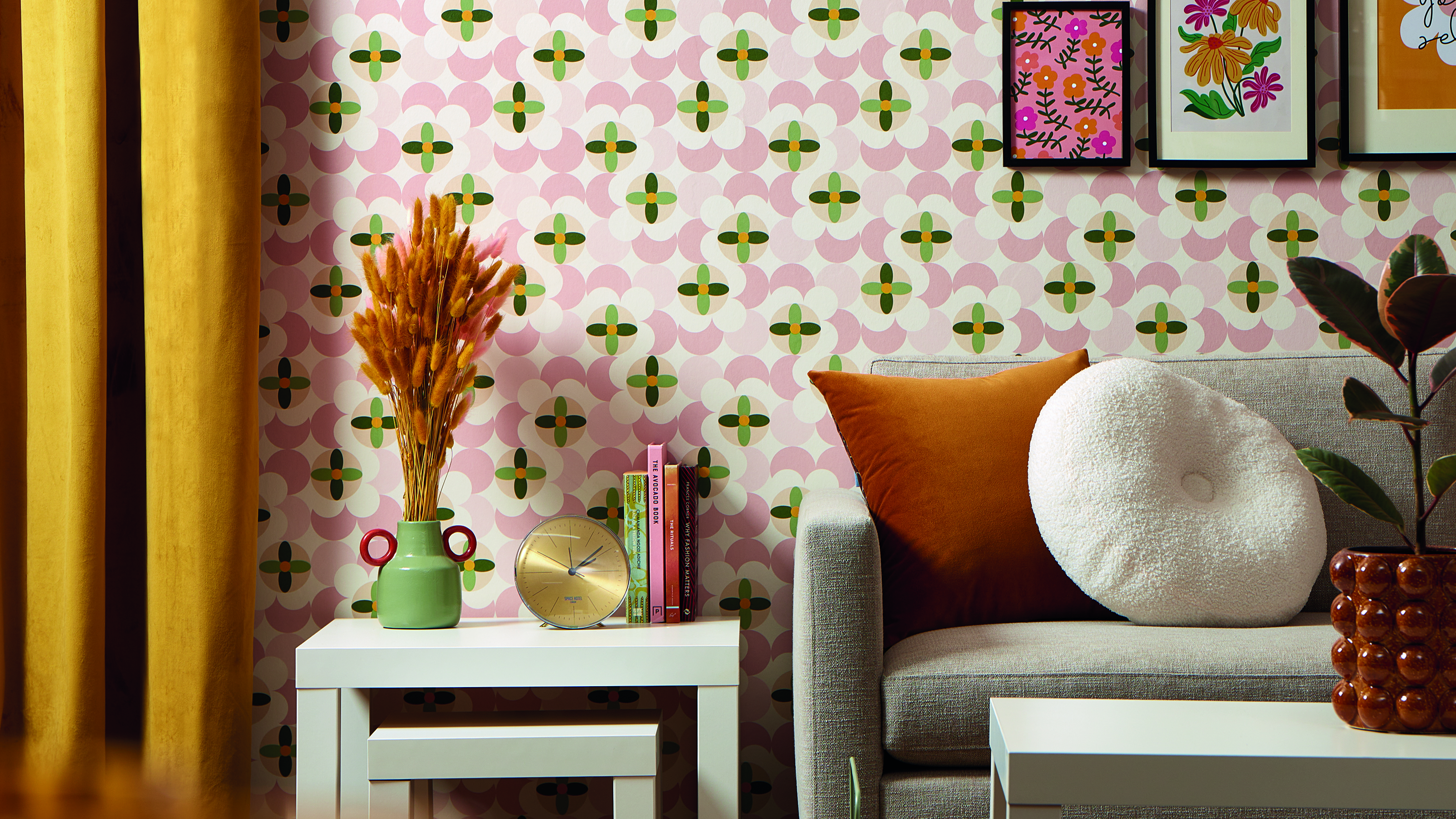

Working out how to add character to a new build can be incredibly daunting when faced with a white box fresh finish, identical to all your neighbours. Luckily, it’s not the physical structure but what you put inside it that counts when decorating any home.
Always remember your home is an extension of you – it's the one place you can really be yourself, to play with paint ideas and wallpaper trends, to indulge your personal tastes and this applies to any home, whatever its age.
‘Owning your first property is a huge and exciting milestone in life; you want to imbue it with character and personality and really make it your own,’ says Jemma Jaques, Visual Design Lead at The Lounge. Co. ‘If you’re moving into a new build, it will most likely resemble a white box, free of quirky features or architectural details but there’s so much you can do to change its fortunes.’
Whether you are just looking for living room ideas, or plotting a full glow-up, we’ve shortlisted our top 10 tips for packing personality into a freshly built home.
How to add character to a new build
Don’t be disheartened by the blandness of new builds. Being free from the restrictions of architectural details or other people’s past decorative choices, they can prove incredibly liberating.
‘The biggest advantage of starting with a completely blank canvas is that the opportunities really are endless. You can literally do anything to the space to make it your own and create a beautiful home that is a true reflection of you and your personal style,’ agrees Emma Deterding, Founder and Creative Director, of Kelling Designs.
1. Paper the walls
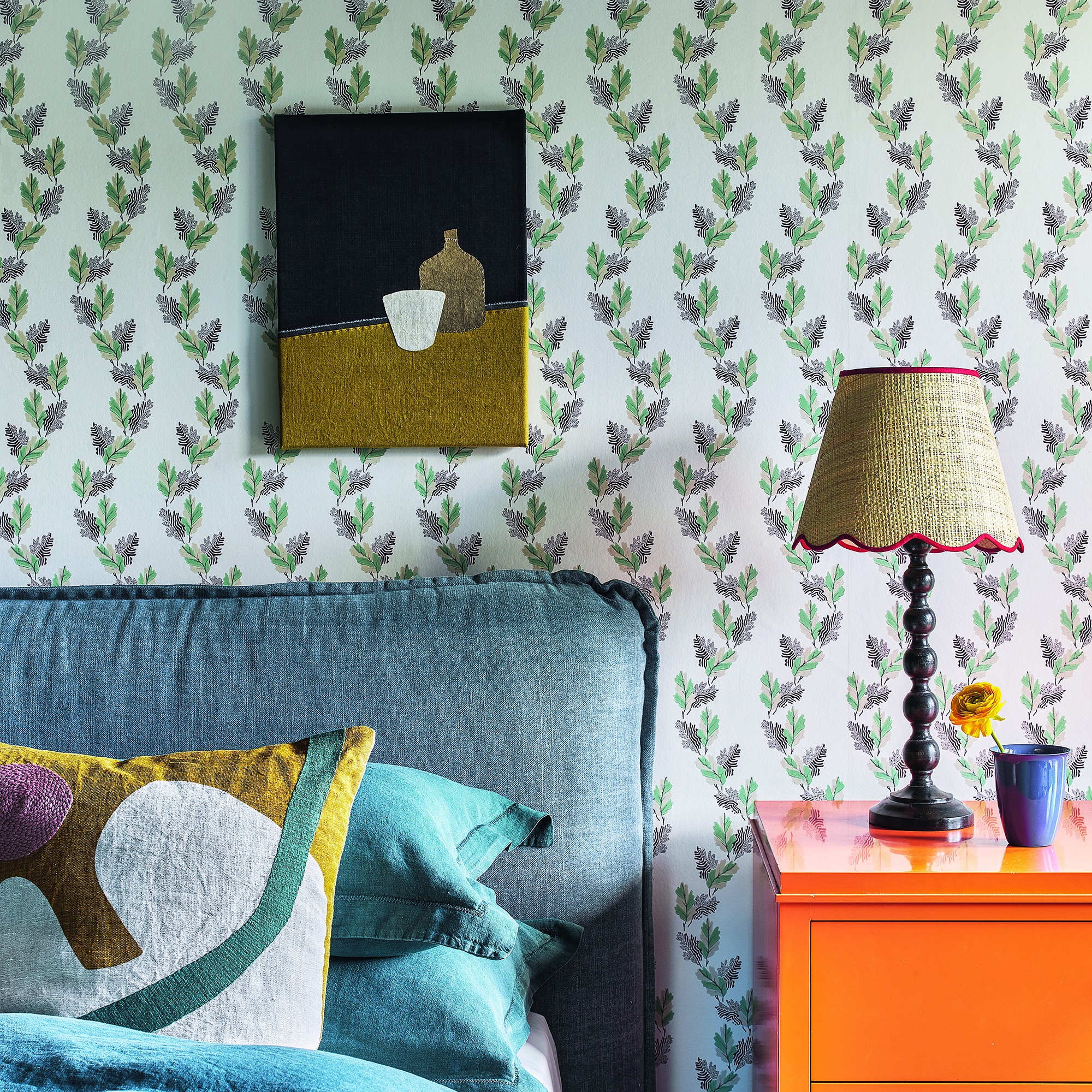
Developers rarely specify wallpaper in new builds, partly down to cost but also to avoid putting buyers off with a design that’s not to their taste. Once you’ve signed on the dotted line, wallpaper is an excellent way to stamp your personal style on your new home.
Get the Ideal Home Newsletter
Sign up to our newsletter for style and decor inspiration, house makeovers, project advice and more.
‘Decorating, especially with wallpaper, is an affordable and easy way to inject some personality into a new build,’ agrees Chelsea Clark, Head of Brand at I Love Wallpaper. ‘Use a bold pop of colour or pattern to add depth and interest to a space.’
Wallpaper can also be used to recreate the look of expensive materials like marble or wood panelling. ‘This can make the space feel more dynamic and engaging. In contrast to the stark white walls of typical new builds, a roll or two of wallpaper will help create a warm, cosy, and inviting atmosphere,’ adds Chelsea.
2. Install a fireplace
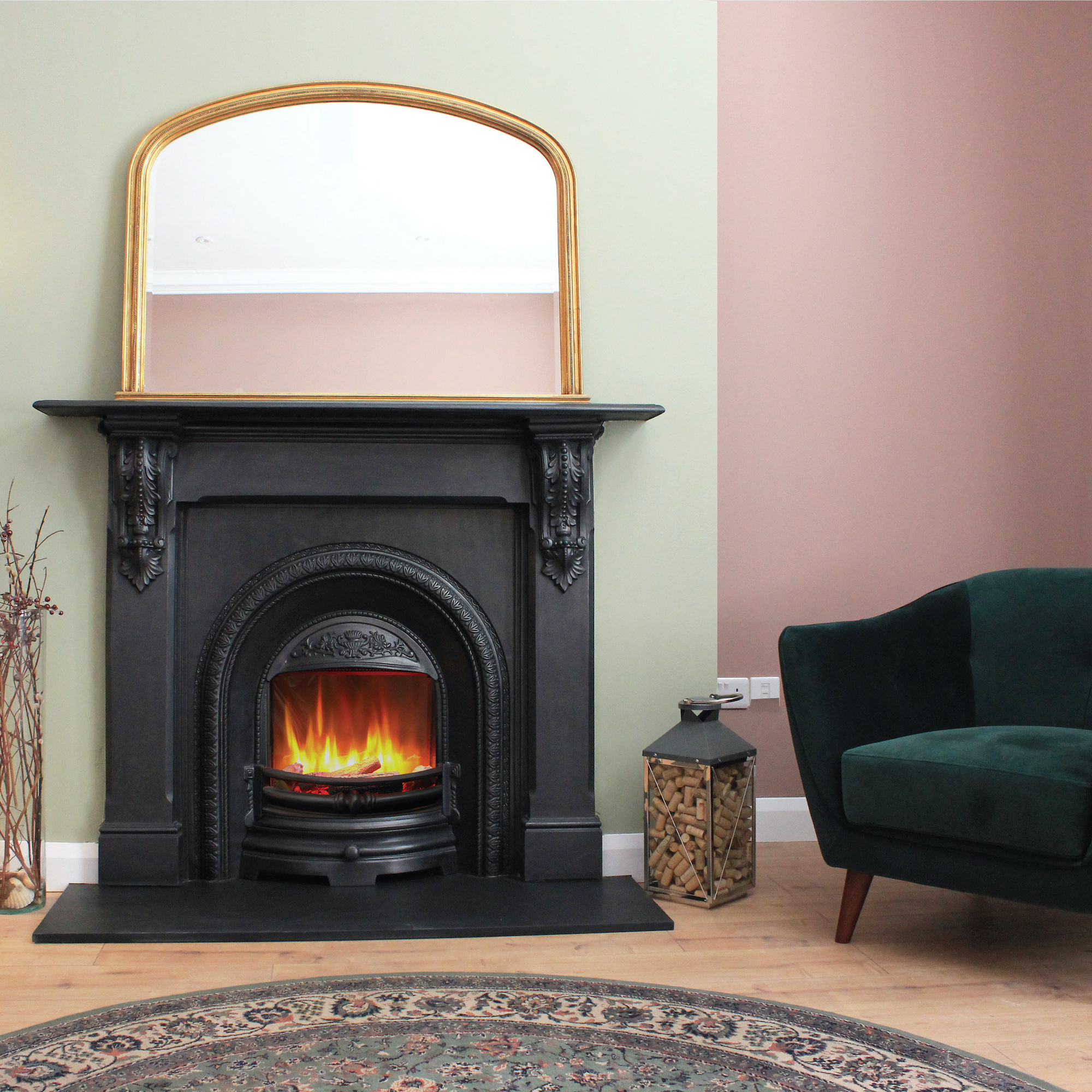
Working fireplaces are rare in contemporary new builds, but it’s hard to beat a beautiful fireplace idea for creating a heart-warming focal point and cosy atmosphere. An electric stove with a stylish surround is one of the least expensive and least disruptive options, according to Chris Baines, Managing Director of Eurostove.
‘A free-standing electric stove would be the easiest to achieve that crucial wow factor. It is very simple to fit – requiring only a plug; no chimney, air supply (hole in the wall) dirty particulates or professional installation,’ he explains. ‘It can be a carbon neutral option as well if using solar or wind power.’
If only real flames will do, and there is no chimney available, you may need to have a pre-fabricated flue system installed, which can fit internally – with the flue pipe part of the design feature – or on an external wall. A faux chimney breast can also be used to hide the flue and create a more traditional fireplace scenario. Don’t forget to add an air vent in the room; the size will depend on the kW output of the stove you choose – check with your supplier before you buy.
3. Fit fresh fixtures
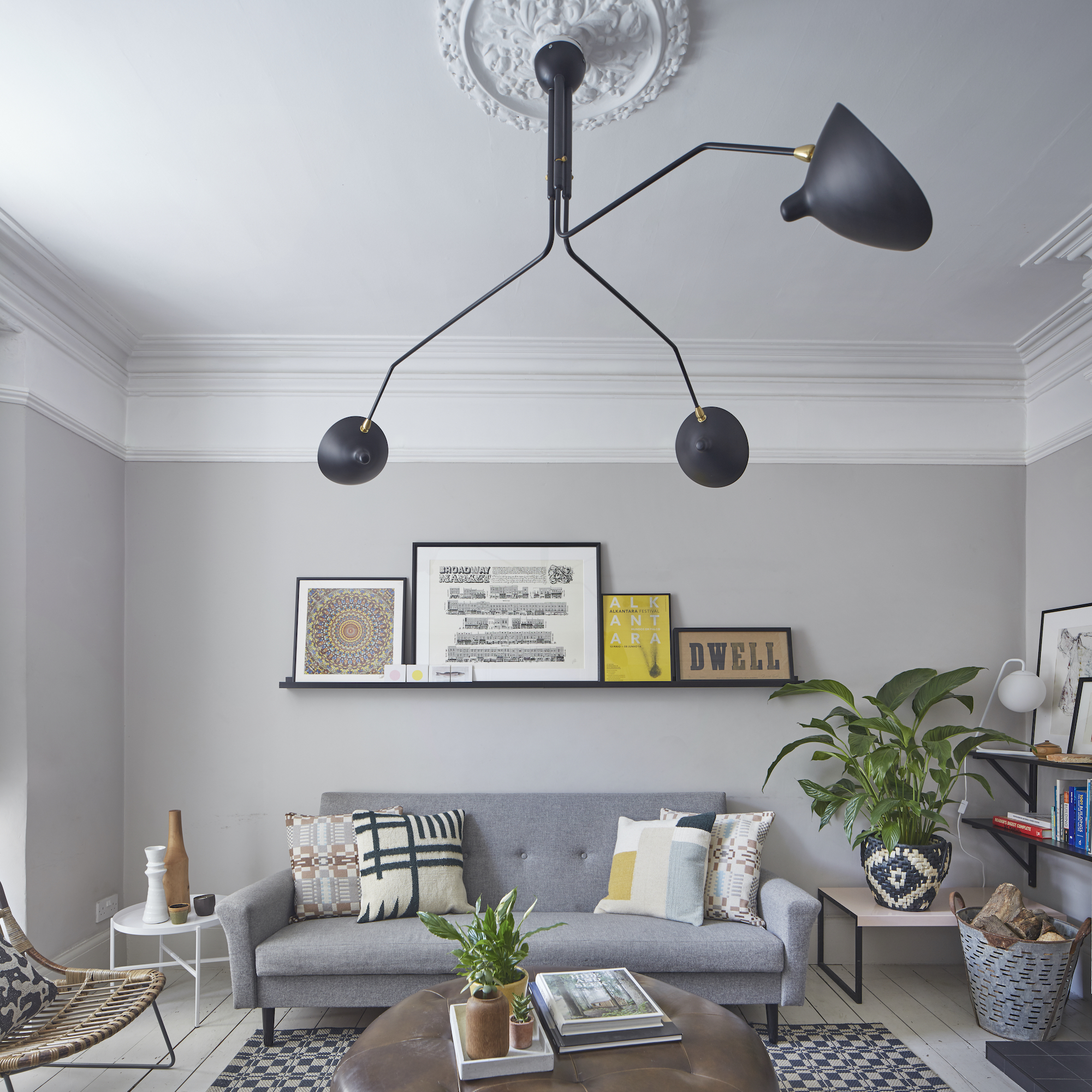
The light fittings installed by developers will be basic at best; usually a standard white ceiling rose with white cable and a bare bulb. Instead of just adding a new shade, consider replacing the rose and cable, too when planning your living room lighting ideas. Go for modern on-trend finishes, like brushed brass or matt black, to add a design punch.
‘The material the lights are made from makes a big difference, so avoid plastic finishes as these will devalue the whole look of the interior,’ advises Mara Rypacek Miller, Managing Director of Industville. ‘Choose handcrafted, high-quality fixtures that will bring an extra touch of luxury and also add some texture to the space.’
Swapping out standard plastic light switches and sockets for fancier designs can also really elevate the luxe levels in a new build. You don’t have to change every fitting, some switches will be behind doors or sofas, for example, but do identify any that fall in direct sightlines for an upgrade. If you replace like for like – for example a double socket for another double socket in the same size and shape, just a nicer finish – your electrician’s wiring task should prove quick and easy.
4. Source vintage furniture

Mixing antique finds with modern furniture can fast track the warmth and character in a new build, helping it to feel like home from the moment you first step through the door. It doesn’t pay to go fully traditional throughout, just a few key pieces, such as an old farmhouse table or vintage dresser will be enough to create a relaxed, lived-in atmosphere.
‘I often recommend seeking out wooden mid-century and Scandinavian furniture with striking silhouettes, which can complement the simplicity of the surroundings while adding warmth through their wood tones. For soft furnishings, consider French-style options as this holds a classic touch with a modern and fresh feel,’ advises interior designer Oliver Lyttelton.
5. Be bold with colour
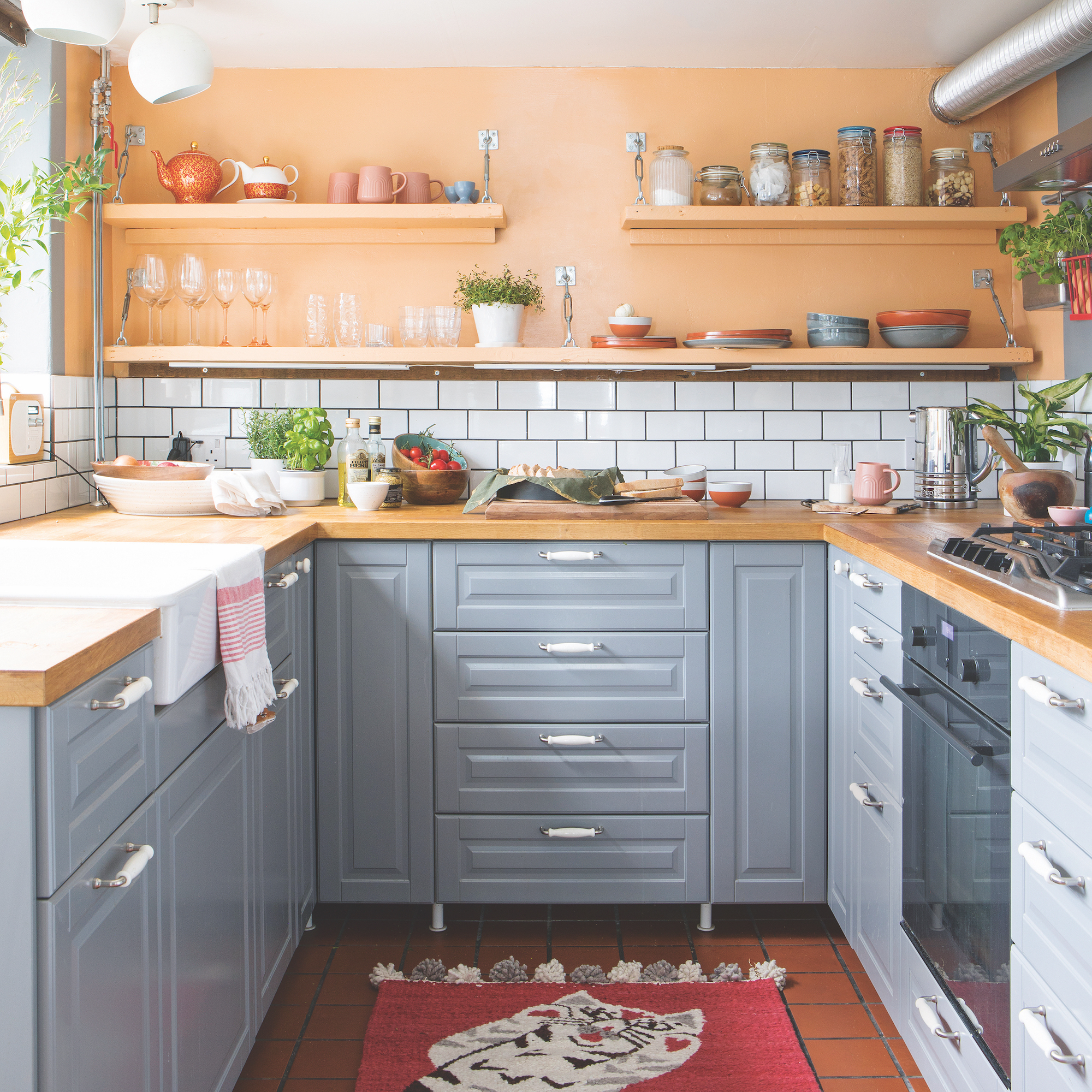
‘When it comes to decorating the interiors of a new build, it's important to come at it boldly!’ enthuses Emma Deterding, Creative Director, Kelling Designs. ‘Often blank canvases, you can really allow your personality and style to shine through so it's important not to shy away from colour and pattern. It's about filling your home with colours you love, whilst still ensuring full functionality for day-to-day living.’
A bold approach needn’t mean you have to wear sunglasses year-round; one strong hit of colour can be all it takes to enliven a room. Stripes, half-walls, spots and colour blocking can also be used to bring colour to life and make the décor more interesting.
When planning your colour combinations, consider using a stronger colour below the eye line as an effective way to be brave without overpowering. However, if you’re committed to a colour hit, take it to the ceiling and be loud and proud!
6. Panel the walls
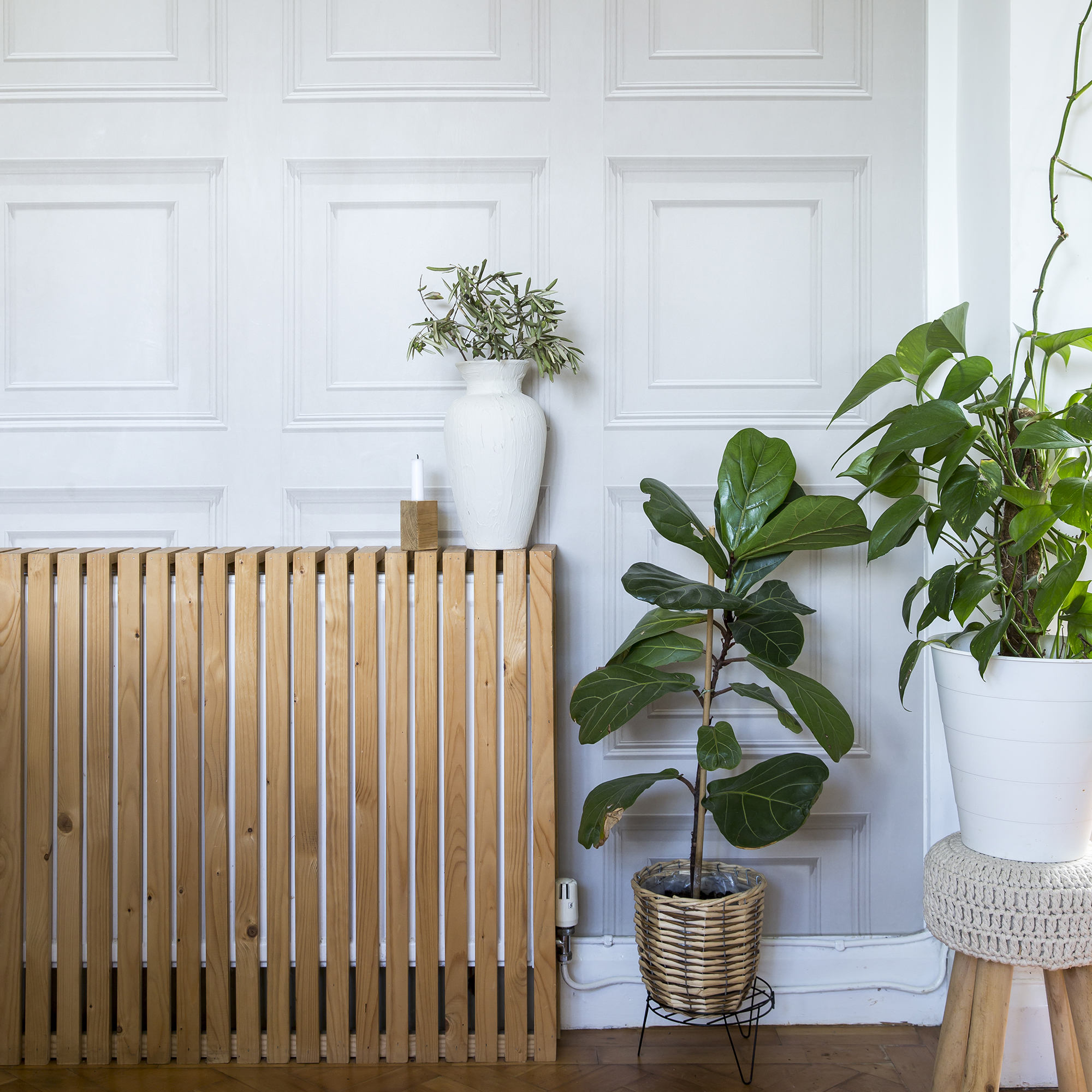
Wall panelling is an easy DIY project that will relieve the monotony of plain walls and can prove cost-effective. ‘Less can sometimes be more when it comes to wall panelling. Opting to panel just one wall instead of the whole room can help to create a focal point, as well as create less work,’ explains Zoe Groff, product manager, Richard Burbidge.
Wall panelling also has practical benefits beyond aesthetics. ‘Strategically placed panelling can conceal uneven surfaces and marks as well as protect walls in high traffic areas like hallways and doorways,’ says Zoe. ‘Square wall panelling works best if you really want to make a statement, whereas decorative panelling helps to create a subtler, more delicate look.’
7. Create a picture gallery
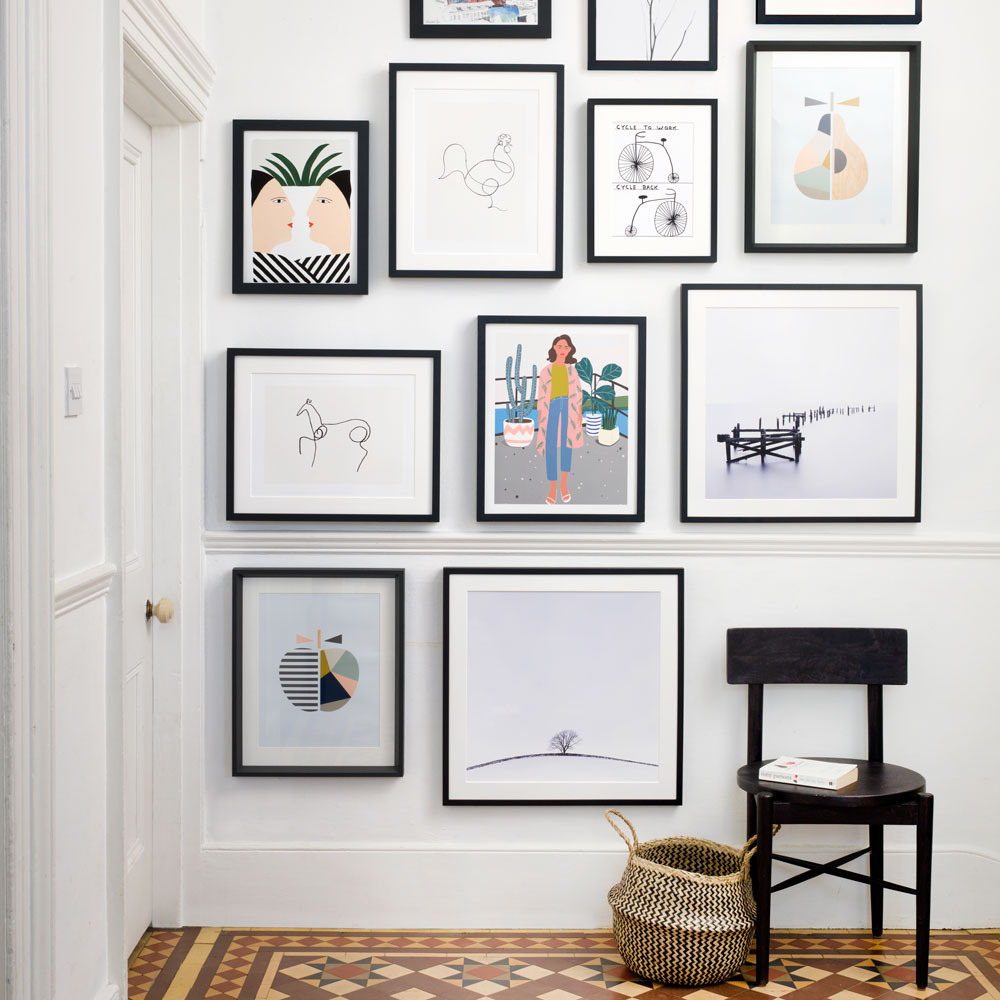
Gallery wall ideas never fail to add character. Helen Joseph, from the Interior Design team at Redrow, recommends creating a gallery wall against your lounge or corner sofa to immediately add interest to the eye and grab the attention of guests.
‘From here, you can tailor these pieces to your personal style – abstract artwork for a contemporary feel or sentimental photos for added comfort. It can be nice to ensure these have a theme and match your chosen colour palette,’ she says. ‘Swap normal mounts for coloured mounts to tie in with your colour scheme for added interest and pops of colour. For example, reminiscing on summer with tapestries from overseas holidays or items and images collected with your family.’
8. Install built in storage
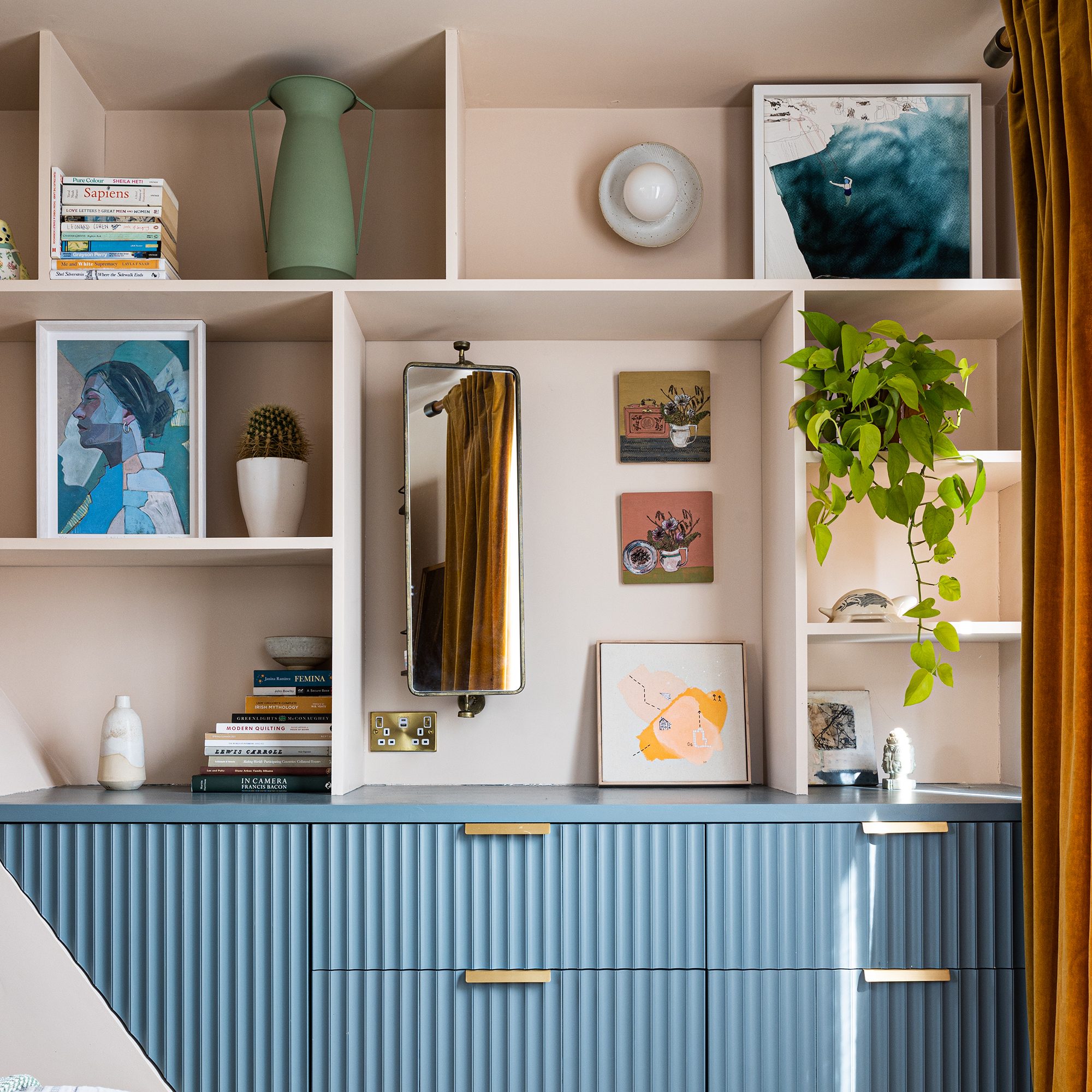
Most busy homes will benefit from plenty of fitted storage ideas, and new builds are no exception. As well as providing more places to stash away essentials and keep your home tidy, built in storage has added design benefits.
‘Installing fitted furniture enables you to completely transform the look and feel of any room, whatever its size. For example, fitted alcove cabinets or a media wall in a new build living room will not only add character and depth but also provide a focal point,’ explains John Graham, Founder and Managing Director at DIY Alcove Cabinets.
‘In addition to offering the practical storage element, which new builds often lack, fitted furniture can be a great design feature and an opportunity to stamp your own personality and style in the room,’ John continues.
‘Selecting Shaker-style doors with a decorative cornice will instantly add period character, while sleeker designs create a contemporary feel. Experiment with painting your fitted furniture in bold or unconventional colours. A pop of colour can instantly draw attention to an otherwise neutral space. Finally, you can really personalise your fitted furniture with decorative hardware such as handles, knobs, and pulls and some show-stopping ‘shelfie’ styling!’
9. Add in architectural details
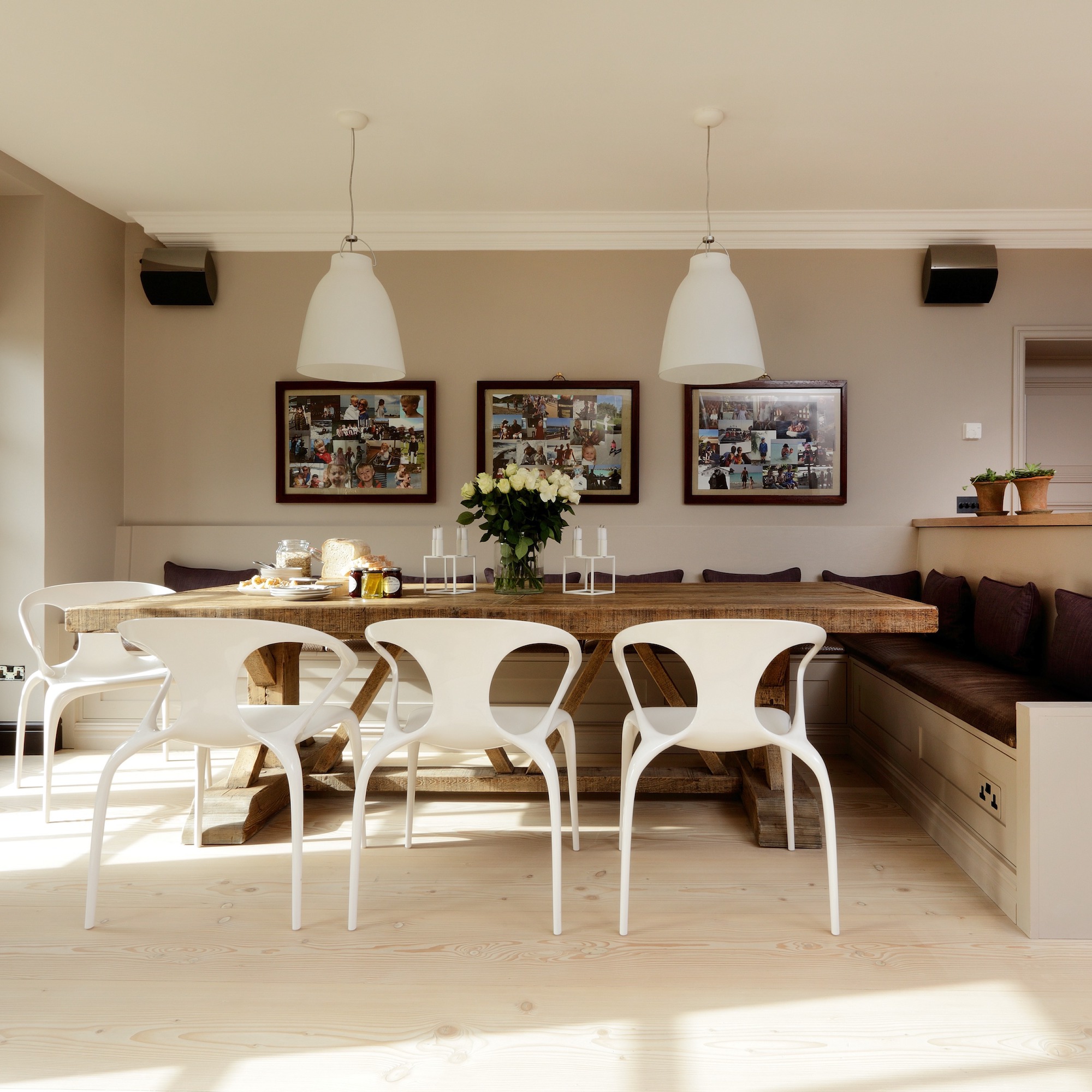
If you’ve ever walked into a modern room and felt like something was missing, it could well be the coving! Many contemporary builders deliberately forego architectural details such as coving, plinths, ceiling roses, picture rails, dados and architraves to maintain a clean-lined aesthetic. The results can be very crisp and cool, but they can also be bland. Luckily, architectural features like these are relatively easy to retrofit once you’ve moved in.
Start by deciding on which architectural period you prefer; some are associated with fancier architectural details than others and it’s important to stick with your preferred style throughout the house to achieve design cohesion.
‘Each era has a definitive identity that should be respected,’ explains Martin Brown, Head of Interiors at Octagon Developments. ‘For example, Victorian ceiling roses are far more elaborate than Georgian, which generally have simpler designs and an understated feel. Octagon’s new builds often have a neo-Georgian feel, so we install three-step coving and skirting boards, which perfectly unites a contemporary and classical look.’
10. Change the hardware
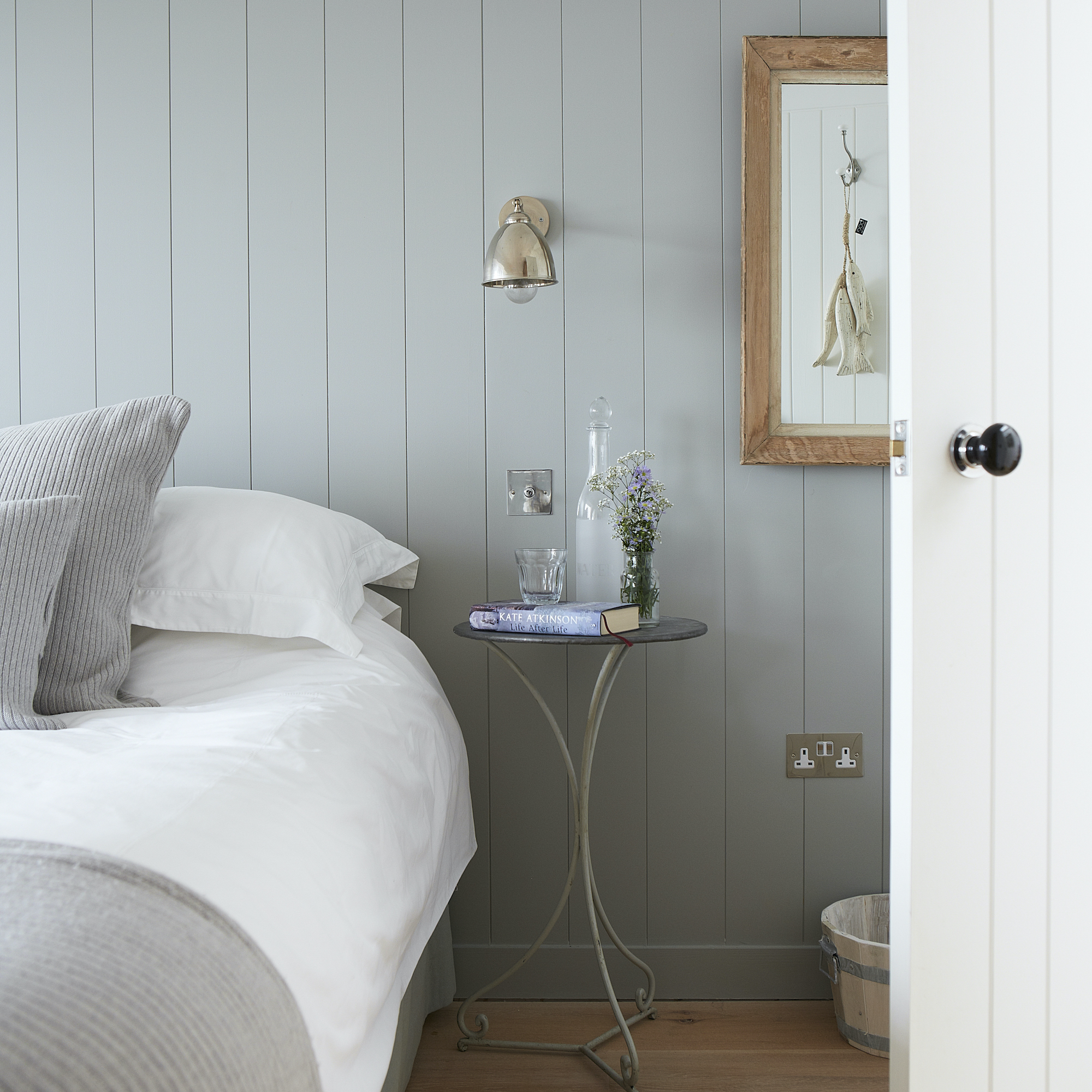
Fitting new internal door handles may sound OTT but it can prove an effective way to make a subtle impact in a new build property that lacks personality. Known in the business as the “touch-points of your home”, upgrading the door knobs and handles will literally make it ‘feel’ nicer, too.
You could also consider swapping out the handles on your kitchen cabinets or any fitted cupboards, which will help them stand apart from the exact same kitchen in the new build next door!
‘These smaller details are often what define a home and elevate it to a premium level. It’s important to opt for quality when choosing frequently touched items like internal door handles as this will ensure longevity,’ says Paul Clifford, Managing Director at Croft.
‘Cheaper alternatives can be felt immediately and tend to age faster, meaning additional budget and time to replace them. For a sleek and seamless result, select hardware in the same finish throughout your home for a cohesive aesthetic.’
FAQs
What adds character to a house?
There is so much you can do to improve a new build that lacks soul but one of the simplest solutions involves using texture to exude warmth and tactility. ‘Sometimes new builds can feel cold with their white walls and white ceilings. Adding warm tones through natural woods and soft upholstery can create a warmer and more inviting space,’ explains Tori Malone, Senior Interior Designer at INVESTA.
‘Layering textures can help add depth, personality and ultimately character to a new build’s space. Think rugs, artwork, curtains, cushions and throws. This is a great way of incorporating colour and pattern too.
'Don’t worry about matching the existing finishes. In a new build, the likelihood is that you don’t have much choice in your finishes. Just because the house comes with chrome faceplates and door handles, doesn’t mean you should avoid other metals such as antique brass. Provided it works tonally, go ahead and mix materials.’
How do you personalise a new build?
Personalising a new build is a wonderful opportunity to turn a blank canvas into a warm and inviting space that reflects your personality and style. ‘Start by selecting a colour scheme that resonates with you. Window dressings, throws and cushions offer the ideal way to infuse your chosen palette throughout your home, creating a cohesive and personalised look,’ says Debbie Leigh, Design Manager at ILIV.
‘Soft furnishings are versatile and can be easily updated with the changing seasons or your evolving tastes. Unlike major renovations or furniture replacements, updating soft furnishings is typically budget-friendly,’ adds Debbie.
‘This affordability means you can experiment with new looks and trends without breaking the bank. It's an excellent way to keep your home feeling fresh and up to date without committing to significant investments.’

Linda Clayton is a professionally trained journalist, and has specialised in product design, interiors and fitness for more than two decades. Linda has written for a wide range of publications, from the Daily Telegraph and Guardian to Homes & Gardens and Livingetc. She has been freelancing for Ideal Home Magazine since 2008, covering design trends, home makeovers, product reviews and much more.
-
 Wood drenching is the calming new twist on the colour drenching trend – here’s how to make the look work in your home
Wood drenching is the calming new twist on the colour drenching trend – here’s how to make the look work in your homeIt’s easier than ever to embrace natural materials
By Maddie Balcombe
-
 Aldi is launching a £200 day bed with four different features - its sleek design is suited to the whole family
Aldi is launching a £200 day bed with four different features - its sleek design is suited to the whole familyYou don't want to miss out on this Specialbuy
By Kezia Reynolds
-
 How to set up a drip watering system that saves water and a lot of effort
How to set up a drip watering system that saves water and a lot of effortKeep your plants hydrated (and your water bill down) with this clever garden watering solution
By Natalie Osborn